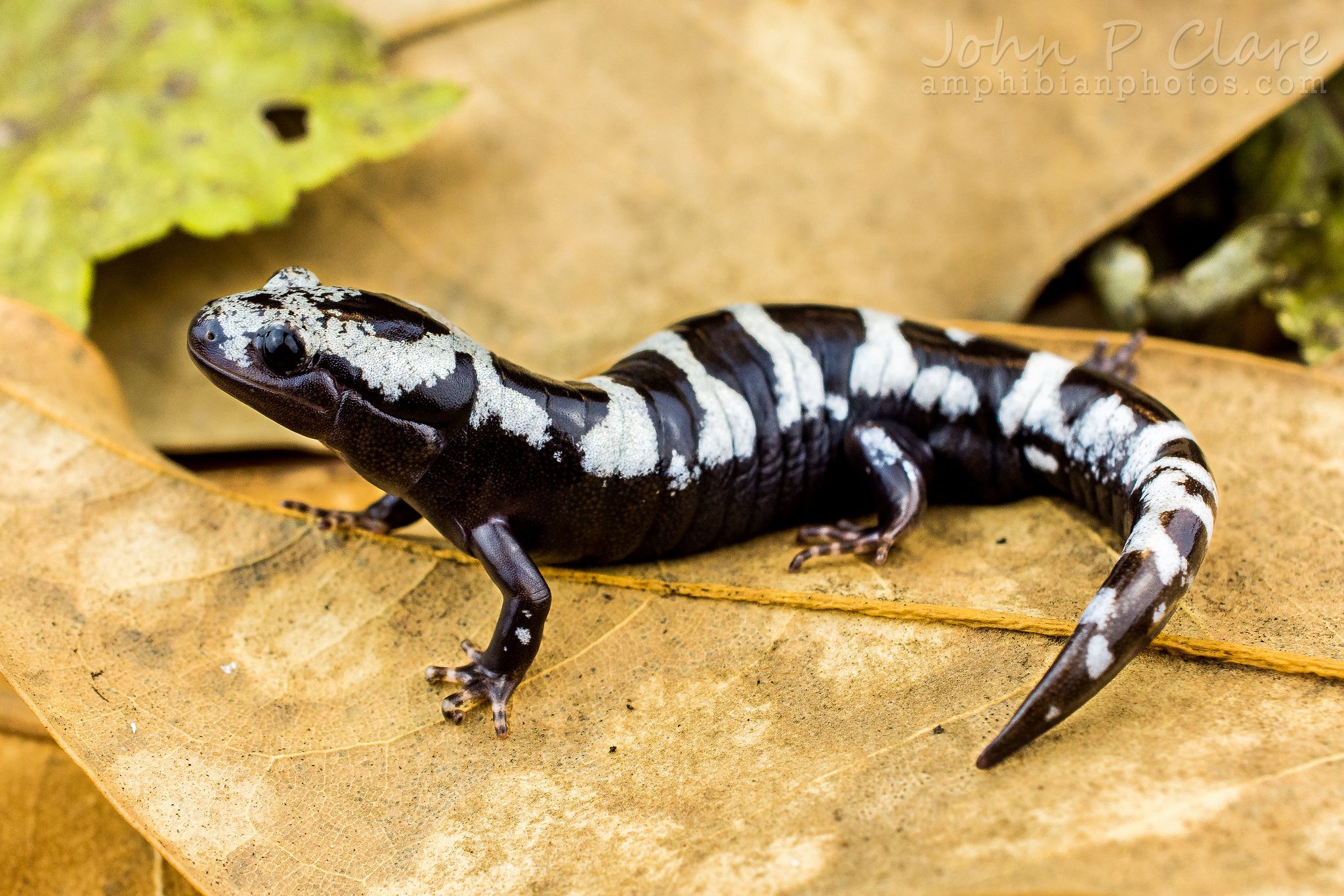Marbled salamander
(Ambystoma opacum)

Description
The marbled salamander (Ambystoma opacum) is a species of mole salamander found in the eastern United States. The marbled salamander is a stocky and boldly banded salamander. The bands of females tend to be gray, while those of males are more white. Adults can grow to about 11 cm (4 in), small compared to other members of its genus. Like most of the mole salamanders, it is secretive, spending most of its life under logs or in burrows. Marbled salamanders are found in the eastern United States, from southern New England to northern Florida, and west to Illinois and Texas. They have been found as far north as New Hampshire, though only two sightings have been reported there. Their habitats are damp woodlands, forests, and places with soft and wet soil. Seasonally flooded areas are essential for breeding, but the salamanders do not normally enter the water. Like many salamanders, marbled salamanders have poison glands to deter predators. The marbled salamander is the state salamander of North Carolina. The first months that Marbled Salamanders spend living out of the water are the most important in determining how many will survive until the next breeding season. Marbled Salamanders are not strong burrowers, therefore they rely on existing holes in the ground for shelter. Desiccation, heat stress, soil moisture, temperature, and pH are all important factors in determining if a Marbled Salamander will survive. Chances of survival are low for Marbled Salamanders who travel through fields, however, they have been observed to traverse fields in order to find other pond areas. Marbled Salamanders survive best in a forest habitat, compared to an open field. Protecting wetlands is key to the survival of this species. Conservationists recommend leaving a buffer zone of forest around wetlands to increase survivorship of Marbled Salamanders. Adults spend most of their time in their burrows or under logs, as is the case with most mole salamanders. Juvenile marbled salamanders hatch early compared to most salamanders and gain a size advantage by feeding and growing for several months before the Jefferson salamanders and spotted salamanders hatch later in the spring. Larvae typically mature as quickly as two months in the southern part of their range, but take up to six months to mature in the northern part. Marbled salamanders, like other members of this genus, are reported to have relatively long life spans, 8–10 years or more.
Taxonomic tree:







